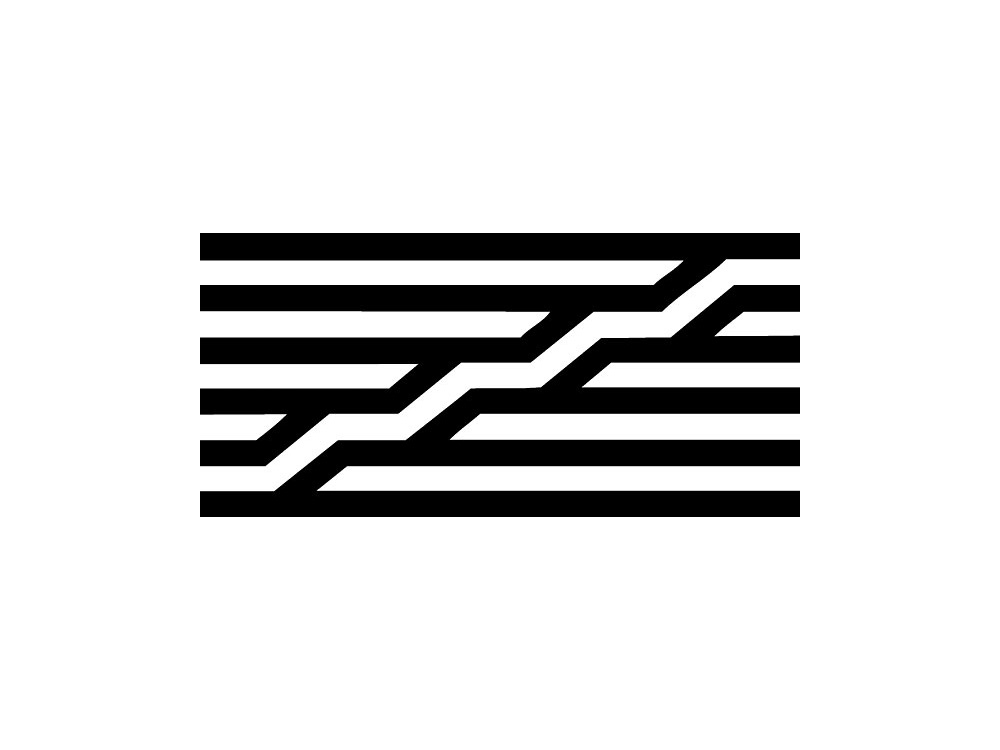National Theatre, London, designed in 1974 by Ian Dennis while at FHK Henrion’s London studio. The slight tweak of the stencil to combine the N and T is a lovely visual trick that stood the test of time.

Canada Snowboard, designed in 2017 by Hulse & Durrell. So simple — turn the Canadian maple leaf upside down to form a snow-covered peak, and enclose it in a black diamond to represent “the most badass run on the mountain.”

English National Opera (ENO), designed in 1990 by Mike Dempsey while at Carroll Dempsey Thirkell. The logo has since been updated, sadly losing some of the character of that big opera mouth.

Amnesty International, by the late Amnesty member and artist Diana Redhouse. Barbed wire for hopelessness, countered by the burning candle for hope. An ideal representation of what the brand is about.

A. G. Low Construction, by Rebecca Low (a student at the time). A simple mark that integrates negative space for a visual play on floor plans.

9/11 Memorial, by Landor (New York). No words needed.

BAA (British Airport Authority), designed in 1986 by John David Lloyd while at Lloyd Northover. The three triangles in the symbol clearly suggest something airport related.

Oculus, a collaboration between Cory Schmitz, Mackey Saturday, Nicolaus Taylor, and Jon Malkemus. The wide ‘o’ works wonderfully as a stylised VR headset.

Centre Pompidou, designed in 1974 by Jean Widmer. An idea that captures the defining feature of the building — the escalator in the glass tube that’s visible from the outside.

Garden Lighting Company, by The Chase. Depending on where a logo will be seen, the execution doesn’t always need to be minimal in appearance, as with this flower / light-shade combination that immediately made me smile. The flower’s interchangeable, too, for some design flexibility.

Or this for Eagle Clean, by The Partners. Brilliant.
If you push your ideas that little bit further, turn a thing upside down, flip a letter back to front, you’ll find a mark just waiting to be discovered — something so obvious it makes the work of a designer look easy.
More in the series:
Marked with thought #2
Marked with thought #3





Comments
David, I share in with not only the wit in the Eagle Clean logo, but also in the idea that logos don’t always need to be drawn in Adobe Illustrator, or even sketched at all. A memorable artefact or memorabilia relevant to the problem and/or industry in question can be employed, just like The Partners did with Eagle Clean.
Absolutely, Simon. The execution depends on where a logo needs to be used.
I love the Canada Snowboard mark, clean simple and communicates visually in the simplest way. And that’s what it’s all about.
Been simple and clever at the same time and this is why the simplest marks are the most difficult.
I always say less is best, depending on the use.
Achieving simplicity is the key pillar when judging the memorability and effectiveness of a great logo design.
These design principles of simplicity, clarity and minimalism can have such a profound impact on logos, and transcend all sorts of design projects, from advertising and web design to interior design and architecture. Thanks for sharing!
Great Logos. Great Ideas. Thanks for the inspiration.